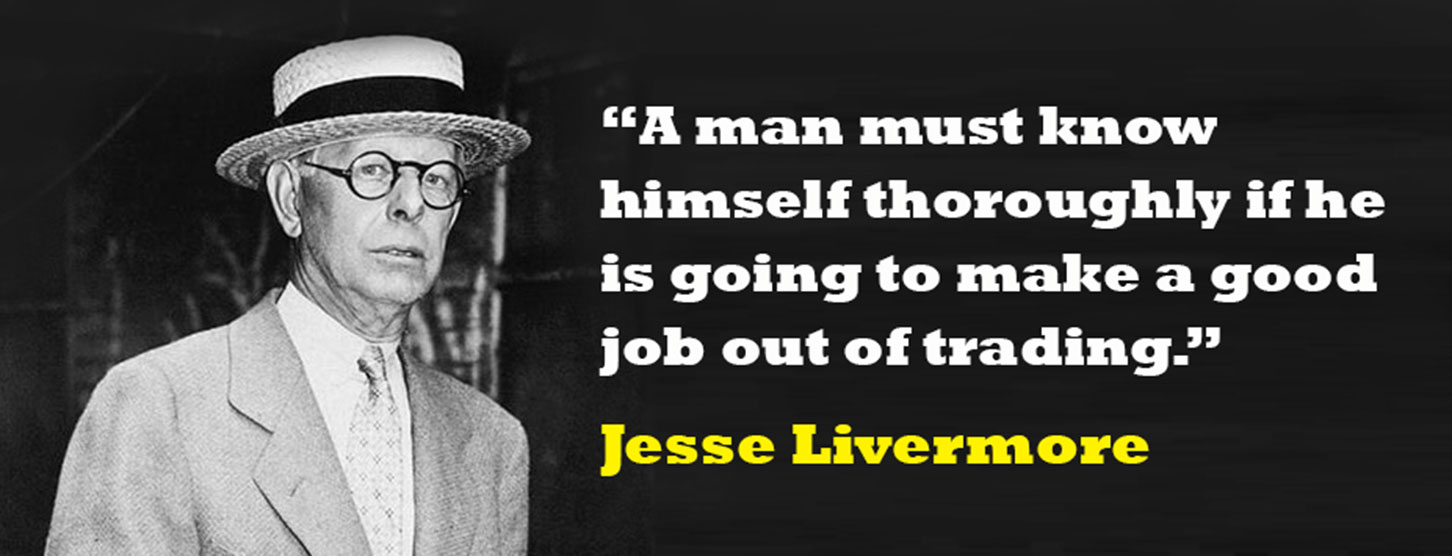By Nick Yannoulopoulos
Share post
Jesse Livermore (1877-1940) was an American trader who over his long and renowned career traded both bull and bear markets including the panic of 1907 and crash of 1929.
He is most famous today for being the object of the best-selling Reminiscences of a Stock Operator written by Edwin Lefevre in 1923. Whilst Reminiscences is supposedly a fictionalised first-person narrative by Larry Livingstone, it is dedicated to Livermore and is widely accepted to be a biography of Livermore who played a large role in its writing. Livermore himself wrote a less widely read book, How To Trade In Stocks, published in 1940.
Reminiscences mirrors Livermore’s life in trading, starting with his first job, age 14, as a “chalk boy” posting stock quotes for a Paine Webber brokerage office in Boston. But it’s the insights into investor behavior and Livermore’s relentless quest for trading self-knowledge that has made Reminiscences one of the most highly regarded financial books ever written.
Like behavioral scientists today, Livermore was a keen observer of emotion and its impact on investment decisions and financial markets. One of his favorite books was Extraordinary Popular Delusions and the Madness of Crowds, by Charles Mackay (1841) and he believed that the non-rational element of investor activity was the main driver in the repetition of price trends and patterns: ‘There is nothing new on Wall Street or in stock speculation… this is because human nature does not change, and it is human emotion, solidly built into human nature, that always gets in the way of human intelligence. Of this I am sure’.
Livermore was scientific in his rigor. As well as exploring the mind of the market, he also looked inwards, monitoring his own behavior and emotional state whilst trading. ‘I wish to know my own limitations and habits of thought’. This was no philosophical exercise; by understanding better his investment behavior, Livermore knew he could avoid repeating mistakes and give himself an extra edge in the perpetual battle every trader faces between emotional reaction and skill.
“Success in investing doesn’t correlate with IQ once you’re above the level of 25. Once you have ordinary intelligence, what you need is the temperament to control the urges that get other people in trouble in investing”
Jesse Livermore
For Livermore, self-awareness and trading discipline were two sides of the same coin.
Significantly, and again with parallels to behavioral science today, Livermore explored the influence of non-conscious triggers on investment behaviour. He actively studied the work of Freud and Jung, pioneers in the study of the mind at that time.
‘The speculator’s chief enemies are always boring from within. It is inseparable from human nature to hope and to fear. In speculation when the market goes against you hope that every day will be the last day – and you lose more than you should had you not listened to hope… and when the market goes your way you become fearful that the next day will take away your profit, and you get out – too soon. Fear keeps you from trading as much money as you ought to. The successful trader has to fight these two deep-seated instincts. He has to reverse what you might call his natural impulses’.
Would Livermore have been a proponent of cognitive science and behavioral finance today? Undoubtedly.
Livermore, who noted that ‘a stock operator has to fight a lot expensive enemies within himself’, would have been excited at the evolution of early insights like his into Kahneman and Tversky’s evidence-based determination that even the most intelligent people employ a limited rationality that draws on often unconscious judgemental biases and shortcuts to make decisions.
Either Livermore or Kahneman could have said ‘the market does not beat them [investors]. They beat themselves’. (In fact, it was Livermore).
Another nice illustration of the link between today’s science and the past’s glimpsed ideas can be found in Livermore’s thoughts about the difficulty of cutting losers and let winners run: ‘They say you never go broke taking profits. No, you don’t. But neither do you grow rich taking a four-point profit in a bull market… I did precisely the wrong thing. The cotton showed me a loss and I kept it. The wheat showed me a profit and I sold it out.’
We now know this as a cognitive bias called Loss Aversion which tends to lead us to avoid risk when gains are at stake but seek risk when losses are at stake. An expression of this is the Disposition Effect which leads us to run our losing positions too long and cut our winning positions too soon – a very common habit among both professional and amateur investors. (Research into the disposition effect has shown that winners that were sold outperformed losers that were retained by an average excess return of 3.4% per annum – Odean, 1998*).
“Successful trading is always an emotional battle for the speculator, not an intelligent battle… A man must know himself thoroughly if he is going to make a good job out of trading”.
Of course, whilst Livermore had a phenomenal head for numbers, what he could never have guessed at are the recent advances in technology that now allow us to capture and mine huge amounts of data in the search for personal investment patterns.
Using services like Essentia Insight, fund managers and traders can now easily analyze their own behavior with Nobel-grade rigor and use the resulting insights to reduce the impact of cognitive bias and maximise investment skill.
And whereas Livermore was forced to rely on constant self-examination and striving for a better ‘temperament‘, Essentia users can accelerate the feedback loop using technology that is designed around their day-to-day workflow and personal investment approaches.
Would Jessie Livermore have used Essentia? You bet.
* Odean, T. (1998). Are Investors Reluctant to Realise Their Losses? The Journal of Finance, LIII(5), 1775-1798.


